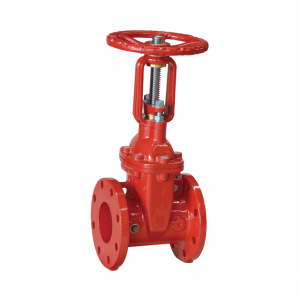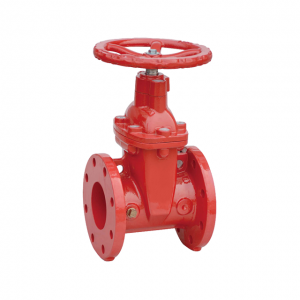Gate valves are important components that control fluid flow in a variety of systems, and understanding the differences between different types of gate valves is critical to selecting the correct gate valve for a specific application. In this blog, we’ll dive into the differences between NRS (recessed stem) and OS&Y (externally threaded and yoke) gate valves, clarifying their unique features and applications.
NRS gate valves are designed with a dead stem, which means the stem does not move up or down when the valve is operated. These valves are often used to control the flow of water in sprinkler systems where space constraints or underground installation make the use of gate valves with rising stems impractical. NRS gate valves are available with a 2″ operating nut or optional handwheel, providing flexibility for customer preference.
OS&Y gate valves, on the other hand, feature an external screw and yoke design with the stem visible on the outside of the valve and operated by a yoke mechanism. This type of gate valve is usually equipped with a resilient wedge and a pre-grooved stem for mounting a monitoring switch. The OS&Y design allows easy visual inspection of valve operation and the convenience of adding accessories for monitoring and control purposes.
Notable features:
The primary differences between NRS and OS&Y gate valves are stem design and visibility. NRS gate valves feature concealed stems for applications where space is limited or the valve is installed underground. In contrast, OS&Y gate valves have a visible stem that moves up and down when the valve is operated, allowing easy monitoring and adding a monitoring switch.
Application:
NRS gate valves are commonly used in groundwater distribution systems, fire protection systems and irrigation systems where control of valve operation is required without the need for constant visual inspection. OS&Y gate valves, on the other hand, are preferred in applications that require regular monitoring and maintenance, such as industrial processes, HVAC systems, and water treatment plants.
Choose the right valve:
When choosing between NRS and OS&Y gate valves, it is important to consider the specific requirements of the application. Factors such as space constraints, ease of maintenance, and visual monitoring requirements will determine the type of gate valve best suited for the intended use.
In summary, understanding the differences between NRS and OS&Y gate valves is critical to making an informed decision when selecting the correct valve for a specific application. By considering the unique functions and applications of each type, engineers and system designers can ensure gate valves achieve optimal performance and functionality in their systems.
Post time: Jul-03-2024


